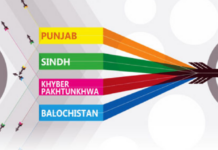Ali Asghar Textile Mills Ltd. (AATM) is about to make an uncharacteristically bright splash on Pakistan’s renewable-energy map. In a material-information notice uploaded to the Pakistan Stock Exchange on 16 May 2025, the Karachi-based logistics-and-warehousing company said its board has authorised construction of a 1,250-kilowatt (1.25 MW) grid-tied solar-photovoltaic plant that will sit on the rooftop and vacant setbacks of its Korangi Industrial Area campus. T
he array—five times larger than the 250 kW pilot AATM switched on two years ago—will be built in one phase, financed largely from internal cash and a concessionary “green-banking” loan the company has negotiated with JS Bank. First kWh are targeted for the fourth quarter of 2026.
On a national grid where generating units are usually measured in hundreds of megawatts, 1.25 MW may sound modest. Yet for an SME with a paid-up capital of barely ₨22 million and revenue of ₨66 million from its core logistics business last year, the venture is almost audacious. The content in this publication is expensive to produce. But unlike other journalistic outfits, business publications have to cover the very organizations that directly give them advertisements. Hence, this large source of revenue, which is the lifeblood of other media houses, is severely compromised on account of Profit’s no-compromise policy when it comes to our reporting. No wonder, Profit has lost multiple ad deals, worth tens of millions of rupees, due to stories that held big businesses to account. Hence, for our work to continue unfettered, it must be supported by discerning readers who know the value of quality business journalism, not just for the economy but for the society as a whole.To read the full article, subscribe and support independent business journalism in Pakistan























